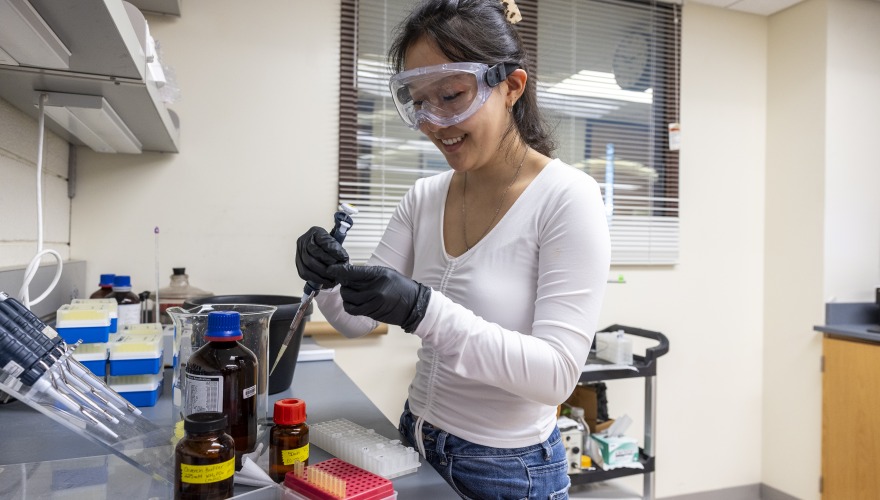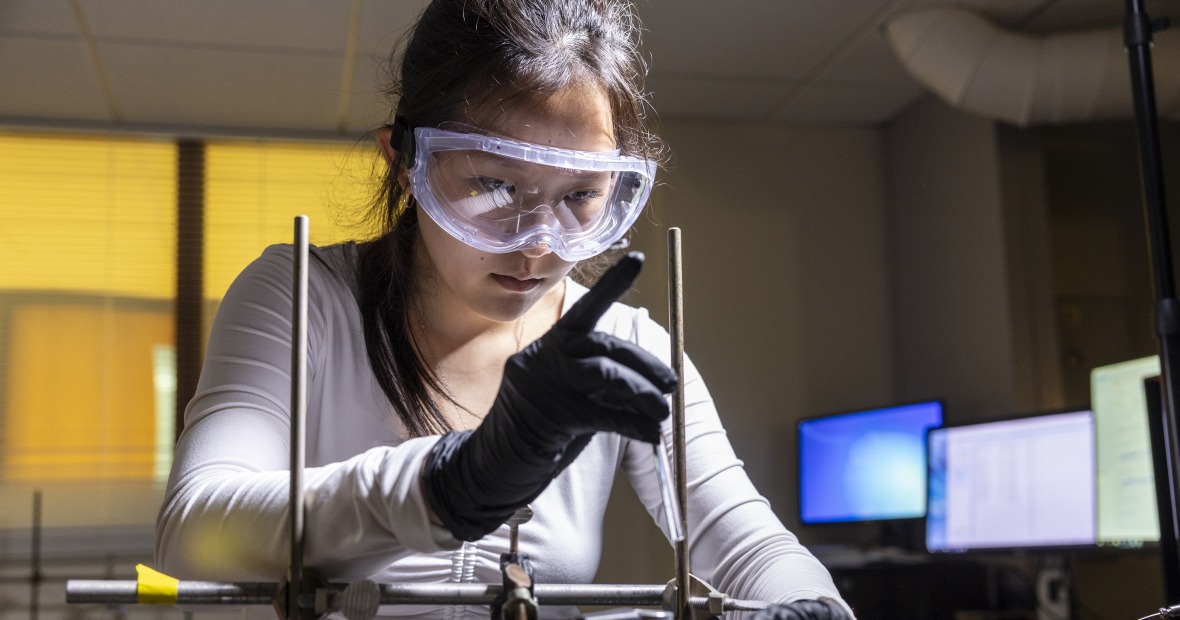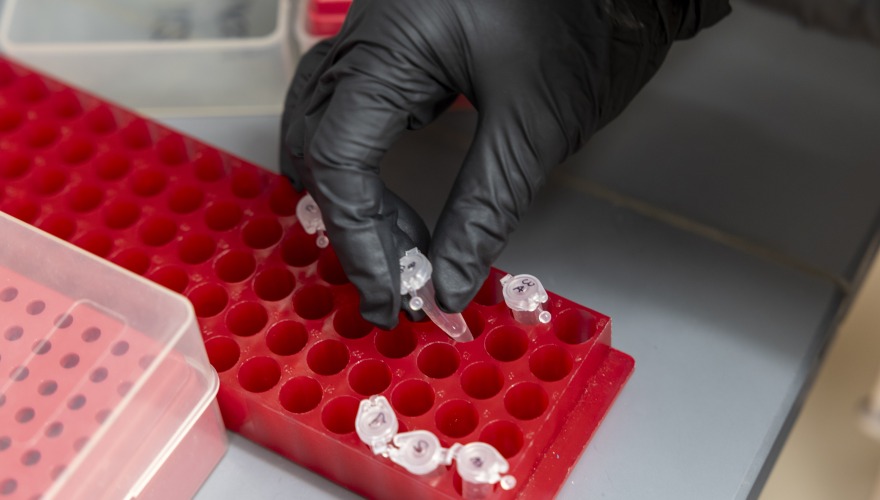Taking ‘Learning By Doing’ to a New Level
Summer MAP Series: Gracie Song ’25
From the introductory level to advanced seminars, Grinnell science students receive plenty of hands-on laboratory experience. Faculty intentionally design course-embedded research projects to build on existing knowledge and to help students become comfortable with important techniques.
But when Gracie Song ’25 jumped into full-time biological chemistry research this summer without completing the Introduction to Biological Chemistry course first, she took a more “crash-course” approach to building her laboratory skillset.
A Biochemistry Bootcamp
Song’s Mentored Advanced Project (MAP) with Elaine Marzluff, Breid-McFarland Professor of Science, studied the structure of a protein called methylene tetrahydrofolate reductase (MTHFR for short). The MTHFR protein helps humans process folate, a B vitamin essential for healthy cell growth.
Song’s project explored changes to the MTHFR protein primarily by using a technique known as hydrogen-deuterium exchange. During this process, a hydrogen atom on a protein is replaced by a heavier deuterium atom. Scientists can study whether and where this exchange takes place to gather information about a protein’s structure, how it folds, and how it might interact with other molecules.
Mastering this technique, however? No small feat. Song spent a good part of her summer learning how to do the hydrogen-deuterium exchange as well as learning the procedures for protein labeling, liquid chromatography, and mass spectrometry. In short, she says, “The first few weeks, I was just jamming my head full of a bunch of new information.”
Fortunately, Song wasn’t alone on this learning curve. Of Marzluff’s summer research team of four students, three had not yet taken Intro to Biological Chemistry. “With all these procedures, we all had to learn what solvents to use, how to run the computers, the machines, how to prepare samples, how to differentiate the controls versus the experimental samples … everything. Before we could even start the research project itself, we had to learn how to get the cleanest data,” Song explains.
Seeing the Bigger Picture
After weeks of practicing and perfecting her technique with the wild-type (unmodified) MTHFR protein, Song moved on to working with a mutated form of the protein. The mutated protein had been created by previous research students, a fact which Song found both inspiring and nerve-wracking. “I think that the coolest thing about MAPs is the way we’re building off of things that so many students have worked on before us,” she says. “But the stakes are also much higher when working with these mutated proteins, since other students spent a whole summer making everything that I’m going to analyze.”

Despite Song’s worry, her experiments — and the data they produced — only improved. She wrapped up the summer with several interesting findings about how mutations to MTHFR affected the protein’s ability to exchange hydrogen for deuterium. Compiling and analyzing the data from the entire summer was especially interesting, she says. “Analyzing the bigger picture was one of my favorite parts because it finally connected all the content that I had worked so hard to understand and study with what I had found myself.”
Searching for More Mysteries
With her hard-earned technical expertise, Song is looking forward to continuing her research during the fall semester. She’s also excited to share her team’s work at a conference this month. “I definitely see myself involved in more research in the future,” says Song. “I love the curiosity that drives each experiment, from understanding a topic to creating questions that are derived from the foundational knowledge and then identifying techniques that can help us better understand whatever mystery we are interested in.”
And as she embarks on her third year at Grinnell and grows more at home in the biological chemistry major, Song is especially grateful for the connections she formed with professors and students during her MAP. “There’s just more time to get to know them as a person while you’re doing research,” she says. Between these new relationships and her hundreds of hours of laboratory experience, Song feels pretty confident as she looks forward to taking Intro to Biological Chemistry this year.


